
6 minute read
Contractor Crews Clean Up Trail Derailment

#92948 | 2017 BOMAG BW138AC-5, 1200 HOURS ....................................................$39,500 #93032 | 2007 KOMATSU CK30, CAB/AC | 2525 HOURS ....................................................$27,500 #93013 | 2013 TAKEUCHI TL12, CAB/AC | 2805 HOURS ..................................................$36,500 #2021001DM | 2015 KOMATSU D39PX-23, 2400 HOURS ....................................................$85,000
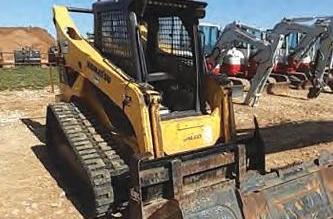
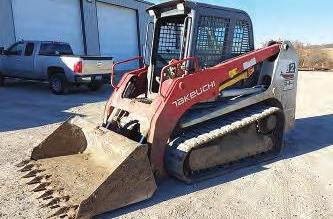


#C003JM | CAT 963C, CAB/AC | GP BUCKET | 7100 HOURS ..........................................$99,500 #92729 | 2012 KOMATSU WA380-7, JRB QC. 4000 HOURS ........................................$127,000 #83398 | 2014 KOMATSU PC210LC-10, QC | 4200 HOURS ........................................$104,500 #82380 | 2009 KOMATSU PC220 LONG FRONT, 5950 HOURS ........................................$129,500



#92930 | 2011 KOMATSU D51PX-22, 6 WAY BLADE | 3200 HOURS ..........................$127,500 #92145 | 2006 KOMATSU PC300LC-7E0, JRB QC, 6900 HOURS ..........................................$69,500 #92926 | 2013 KOMATSU PC490LC-10, 8750 HOURS | AUX HYD | QC ......................$109,000 #93009 | 2015 KOMATSU PC240LC-10, 7,750 HOURS, QC ............................................$79,500
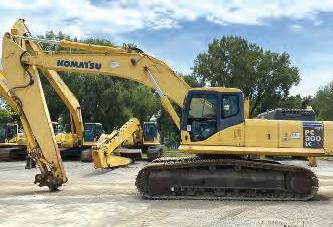

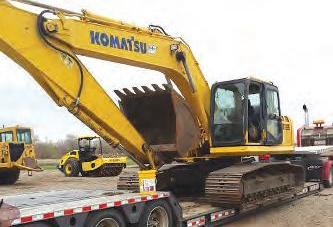

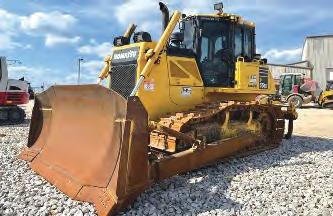
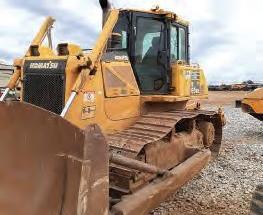
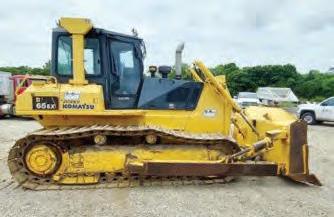
Volunteer emergency responders, firefighters, law enforcement, medical providers, contractor crews and regular citizens all worked together to help those whose trip was so suddenly and violently interrupted by the derailment of an Amtrak train on Sept. 25 in Montana.
With the help of Volvo, John Deere and Komatsu excavators, emergency responders were able to remove the train cars and other debris caused by the accident.
Investigators do not know the cause of the accident, but they are studying video from the train and another locomotive that went over the same track a little over an hour earlier, National Transportation Safety Board Vice Chairman Bruce Landsberg said.
Sometimes rail lines can become deformed by heat, creating buckles in the tracks known as sun kinks, according to officials. That was the cause of a derailment in northern Montana in August 1988, when an Empire Builder train veered off the tracks about 170 mi. east in the tiny town of Saco. The NTSB concluded that an inspection failed to catch a problem in the track, and officials did not warn trains to slow down on that stretch. The crew saw the track had shifted, but the train was going full speed and could not stop before derailing.
“We have experts that are studying the camera footage frame by frame to make sure that we see exactly what the engineer saw — or maybe didn’t see,” Landsberg said.
The train derailed before a switch in the line, where one set of tracks turned into two, on a stretch of track that had been inspected just two days before, he said.
The westbound Empire Builder was traveling from Chicago to Seattle when it left the tracks near Joplin, a town of about 200. The train, carrying 141 passengers and 16 crew members, had two locomotives and 10 cars, eight of which derailed, with some tipping onto their sides.
Trevor Fossen, a farmer who just so happened to be on the scene at the time, stopped to help local crews.
Fossen and at least nine other people called 911, setting off a chain reaction of help from residents in the nearby towns of Joplin and Chester as people jumped into action to get people off the train and care for injured passengers and those who were stunned and had suffered bumps, bruises and other less serious injuries.
Sarah Robbin, the Disaster and Emergency Services coordinator, said the response across the Hi-Line was “fantastic.”
“We can’t thank our partners enough, who came from everywhere and did what they needed to do, and it’s just going to be one of those things that I don’t know that we’ll ever be able to repay, but know that when they put out the call, we will be there for them,” she said.
The derailment was approximately 150 mi. northeast of the capital of Helena and about 30 mi. from the Canadian border. The tracks cut through vast, golden brown wheat fields that were recently harvested and roughly parallel to U.S. Highway 2.
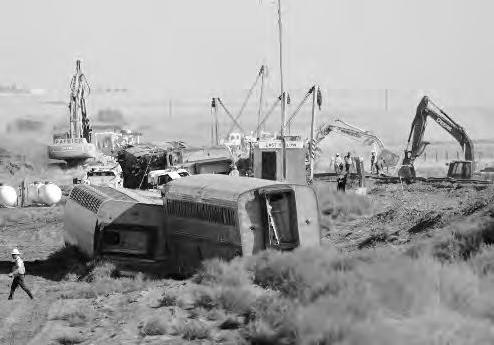
The derailment was approximately 150 mi. northeast of the capital of Helena and about 30 mi. from the Canadian border.

With the help of Volvo, John Deere and Komatsu excavators, emergency responders were able to remove the train cars and other debris caused by the accident.
CDOT Demolishes 57-Year-Old Aging Viaduct On I-70
Crews from the Colorado Department of Transportation’s Central 70 Project successfully demolished the 2-mi.-long Interstate 70 viaduct between Colorado and Brighton boulevards in four months, one month ahead of schedule.
“Safe, successful and timely demolition has been our priority since day one,” said Bob Hays, CDOT's Central 70 project director. “The intricacies of conducting demolition in such a confined area close to homes and businesses were a challenge. But from careful planning and execution, the team completed another major project milestone and Denver’s I-70 viaduct is now a thing of the past.”
Since May, demolition statistics include: • More than 45,000 hours worked to complete demolition; • 18 excavators used in tandem to carefully remove sections of the viaduct at a time; • A total of 52,000 cu. yds. of concrete and 1,025 tons of steel removed and recycled; • More than 4,500 dump truck loads of debris removed.
“With the viaduct demolition happening just feet away from some of these businesses, we wanted to help encourage customers to continue to frequent these local shops and restaurants,” said Central 70 Communications Manager Stacia Sellers. “In addition, Kiewit offered businesses cleaning services to combat dust, which is inevitable with any demolition activities.”
With viaduct demolition now complete, crews will continue excavating for the future eastbound lanes of I-70 between Brighton and Colorado boulevards, which will mirror the current lanes motorists are traveling on today.
During the construction of these future eastbound lanes, traffic on I-70 through the lowered section will remain as is, with three lanes of traffic open in each direction of I-70 during peak travel times.
The future eastbound I-70 lanes are on track to open in 2022. At that time, four lanes of traffic (three general-purpose lanes and one express lane) will be open in each direction.

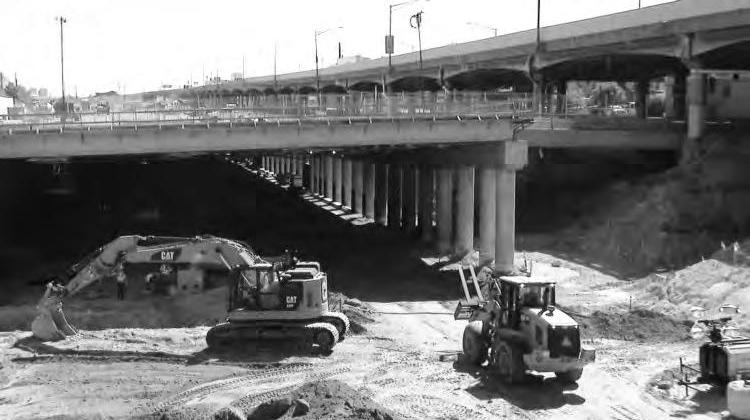

About Central 70 Project
The Central 70 Project will reconstruct a 10-mi. stretch of I-70, add one new express lane in each direction, remove the aging 57year-old viaduct and lower the interstate between Brighton and Colorado boulevards. For more information, visit central70.codot.gov.



